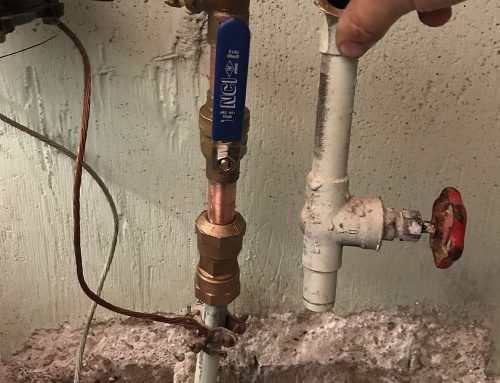Resolving Plumbing Issues in Rental Properties: An Easy Guide
Resolving Plumbing Issues in Rental Properties: An Easy Guide
Blog Article
Just about everyone has got their own unique way of thinking when it comes to Plumbing Maintenance Guide for Tenants.

Taking care of pipes issues in rental residential properties successfully is important for keeping tenant fulfillment and maintaining the residential or commercial property's value. Whether you're a proprietor or a residential or commercial property supervisor, recognizing just how to address these typical troubles can conserve you time and money while making sure conformity with lawful responsibilities. Right here's a detailed overview on just how to take care of pipes concerns in rental properties.
Establish Clear Communication
Encourage renters to report any type of pipes issues as soon as they happen. Supply multiple communication channels such as phone, e-mail, or a renter site to make it very easy for them to reach out. Trigger feedbacks to these records can protect against small issues from intensifying into major problems.
Educate Tenants
Enlighten your lessees concerning what comprises a pipes emergency situation and what does not. Supply guidelines on exactly how to deal with minor problems themselves, such as using a bettor to unblock a bathroom. Additionally, inform them about what they must stay clear of taking down drains pipes to prevent clogs, such as grease, coffee premises, and non-biodegradable items.
Routine Maintenance
Execute a routine upkeep routine for all plumbing systems in your rental residential properties. Regular checks can aid recognize and resolve concerns like leakages, sluggish drains pipes, or corroded pipes prior to they come to be serious. Take into consideration working with a specialist plumbing professional to check the properties each year or semi-annually.
Quick Action to Emergencies
Have a strategy in position for replying to plumbing emergencies. This must include having the contact details of trustworthy plumbing solutions that use 24/7 emergency repairs. Quick activity is necessary to minimize damage in circumstances like ruptured pipelines or severe leakages.
Document Every little thing
Keep detailed records of all reported pipes issues and the activities required to fix them. Documents ought to consist of dates, descriptions of the trouble, communication with occupants, and receipts from specialists or plumbings. This info can be crucial for insurance coverage cases, tax reductions, and legal defense.
Usage Qualified Professionals
Constantly use accredited and insured specialists for significant pipes fixings and installations. This makes sure that the job depends on code and can help prevent responsibility concerns in case of crashes or further damage. It likewise reassures occupants that fixings are being handled expertly.
Understand Legal Obligations
Recognize your legal responsibilities concerning pipes and basic property maintenance. Many jurisdictions need proprietors to guarantee their properties are habitable and that all plumbing systems are in good working order. Failure to attend to severe concerns without delay can lead to legal actions from tenants.
Tenant Reimbursements
If a plumbing issue requires immediate attention and the tenant resolves the issue by themselves, have a clear plan in place for reimbursing prices. Make certain tenants recognize they need to get previous authorization for higher-cost repair services unless it's an absolute emergency.
Preventive Upgrades
Consider upgrading older pipes systems and components to extra modern, reliable versions. This can minimize the regularity and extent of pipes problems and lower long-term upkeep prices. It's likewise a selling point for potential lessees that value upgrades and contemporary features.
Tenant Move-Out Inspections
Conduct thorough pipes checks throughout move-out assessments to guarantee that any type of problems are identified and dealt with before a brand-new tenant moves in. This prevents conflicts with brand-new renters over pre-existing problems and makes sure the residential property is in leading condition.
Conclusion
Managing plumbing concerns in rental residential properties requires an aggressive technique and good interaction with tenants. By remaining on top of maintenance, responding quickly to emergency situations, and making use of competent professionals, proprietors can keep their buildings in exceptional condition and keep excellent relationships with lessees.
How to Handle Water Damage in a Rental Property
What is Water Damage?
Water damage is harm or destruction caused by water entering areas where it is not supposed to be. It can be caused by a variety of sources and can manifest in different ways. The most common examples of water damage include:
Leaking roof Plumbing leaks Appliance malfunctions Poor drainage Flooding Sewage backup Condensation Tenant negligence HVAC system issues Frozen pipes Is water damage dangerous?
Water damage itself is not inherently dangerous, but it can lead to various hazards and health risks if not promptly and properly addressed. The severity of these risks depends on the extent of the water damage, the source of the water, and how quickly it is mitigated.
Some potential dangers associated with water damage include structural damage, mold and bacterial growth, electrical hazards, water contamination, and pest infestations. In situations where mold and mildew have gone unaddressed, mold can start to develop within 24-48 hours of water exposure, and this can impose a serious health risk to tenants. In particular, mold spores and damp conditions can lead to respiratory issues and even make existing health problems worse, such as allergies, asthma, or immune disorders.
Water Damage in an Apartment - Who is Responsible?
If the water damage is caused by the tenant’s negligence, the tenant is responsible for the cost of repairs. If the water damage is caused by a defect in the property, the landlord is responsible for the cost of repairs. If the water damage is a result of natural causes, such as excessive rain, then the landlord is responsible, since the water intrusion likely occurred due to a defect in the property. Landlord Responsibility water damage in rental property
Since maintaining habitability is the landlord’s legal responsibility, landlords are responsible for any resulting structural damage caused by water damage. These structural damages may include damage to walls, roofs, ceilings, and flooring. If water damage has affected the rental property’s original structure, the landlord is responsible for repairing or replacing those materials. Therefore, landlords should have property insurance that covers the structural components of their rental property so that they can receive help with the costs of covered events.
Preventative measures can also help landlords avoid massive renovations. Preventative maintenance may include conducting regular inspections to identify and address potential water damage before it becomes a major and urgent problem.
If a landlord fails to meet their responsibilities regarding water damage, it can lead to legal disputes and potential liability. Tenants who believe their landlord is not addressing water damage issues in accordance with California law can seek legal advice or contact local housing authorities for assistance.
https://www.goodlifemgmt.com/blog/water-damage-in-a-rental-property/

I hope you liked our topic about 10 Common Rental Property Repairs. Thank you for taking a few minutes to read our blog. Those who liked our article plz remember to pass it around. Thanks for being here. Kindly check up our site back soon.
Report this page